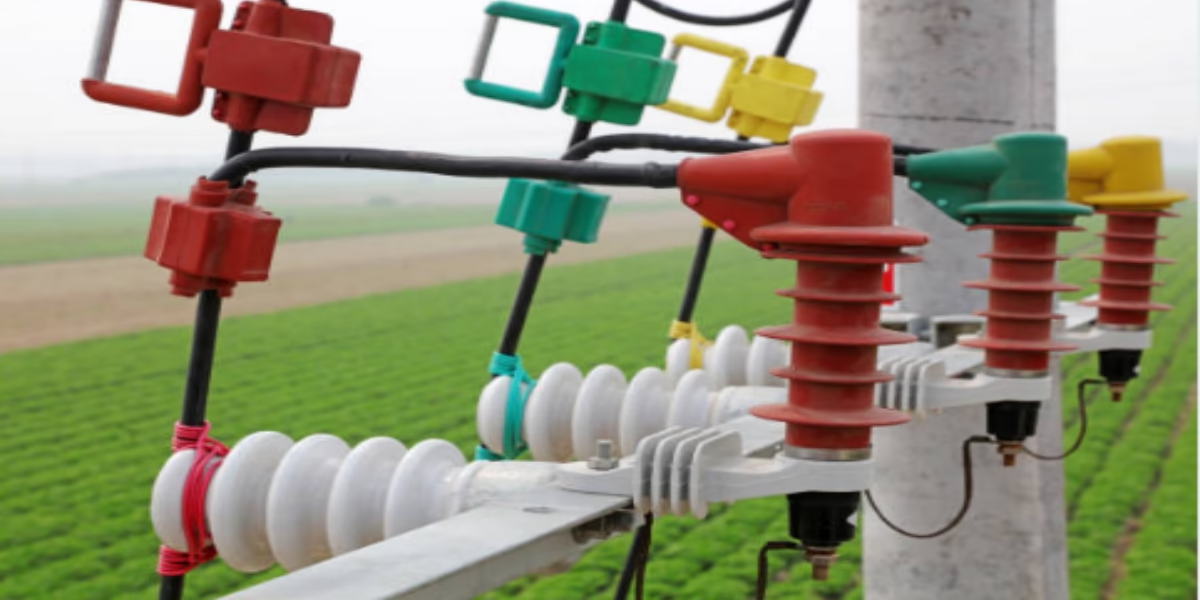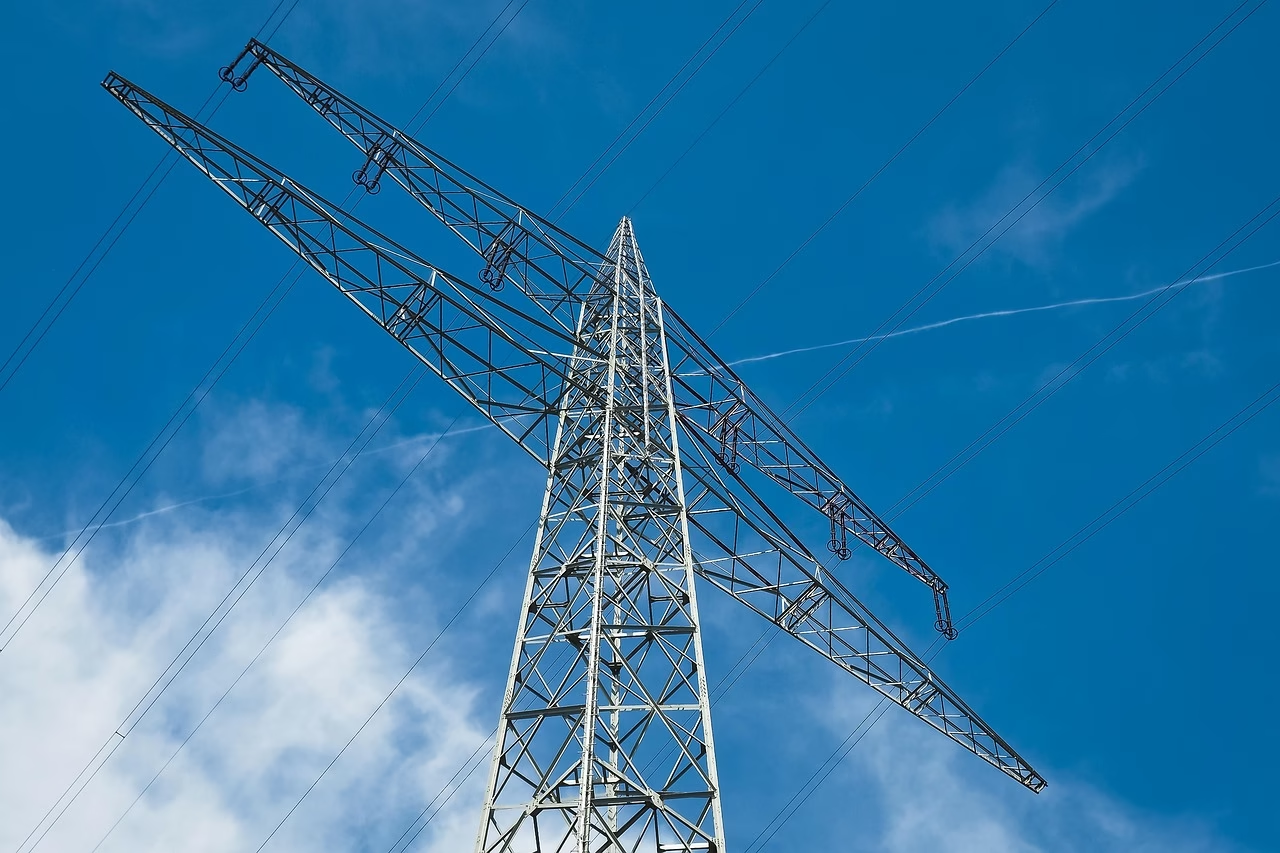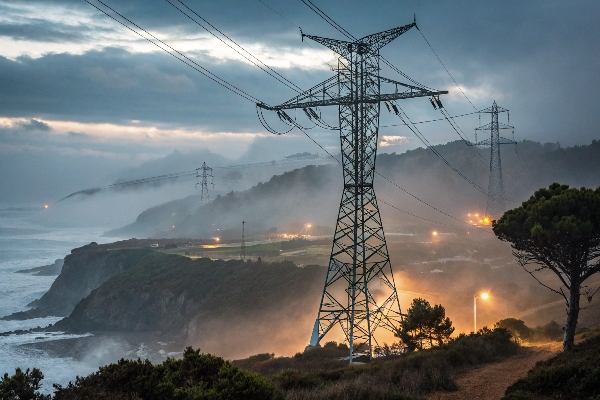In a world where technology pulses thru our lives, weaving connections that propel us forward, the invisible forces of nature can sometimes threaten to unravel our digital tapestry. Lightning, a striking force of nature, possesses the raw power to disrupt, damage, and destroy. As storms gather on the horizon, the need for protection becomes paramount. enter the lightning surge arrester—a humble yet vital sentinel standing guard at the entry points of our electronic systems. This article delves into the essential role that lightning surge arresters play, exploring how these unassuming devices shield our infrastructure from the unpredictable fury of electrical surges. From residential homes to sprawling industrial complexes, we will dissect the mechanics, benefits, and importance of these protective guardians in safeguarding our technology-driven lives. Join us as we uncover the hidden heroics of lightning surge arresters and their significant contribution to a safer and more resilient future.
Table of Contents
- Understanding Lightning Surge Arresters and Their Functionality
- The Dangers of Lightning Strikes: Why Protection is crucial
- Key Features to Look for When Choosing a Surge Arrester
- Proper Installation and Maintenance for Optimal Performance
- Q&A
- Final Thoughts
Understanding Lightning Surge Arresters and Their Functionality
Lightning surge arresters are critical devices designed to protect electrical systems from the devastating effects of lightning strikes and electrical surges. These systems operate by redirecting the excess voltage from a lightning strike or power surges away from sensitive equipment and towards the ground, thus preventing damage. When a surge occurs, the arrester detects the spike in voltage and shunts the excess energy, allowing the electrical system to function safely and reliably. The effectiveness of these devices can be attributed to their ability to maintain system integrity during extreme weather conditions, ensuring that essential services remain uninterrupted.
The functionality of lightning surge arresters can be broadly categorized into several key attributes:
- Voltage Clamping: They provide instantaneous clamping of high voltage waves, limiting the peak voltage that reaches the system.
- Grounding Mechanism: These devices have a reliable grounding path, ensuring that any surge is effectively dissipated into the earth.
- Response time: Lightning surge arresters feature incredibly fast response times, often in the nanosecond range, making them capable of neutralizing surges almost instantaneously.
- Diverse Applications: They are suitable for a wide range of applications, from residential electrical systems to complex industrial setups.
| Type of Surge Arrester | key feature |
|---|---|
| Metal Oxide Varistor (MOV) | High energy absorption |
| Gas Discharge Tube (GDT) | Robust protection against high surge currents |
| Transient Voltage Suppressor (TVS) | Fast response time |
The Dangers of Lightning Strikes: Why protection is Crucial
Lightning strikes are not merely spectacular natural phenomena; they pose significant risks to life and property. Statistically, around 24,000 people are injured by lightning every year, with incidents leading to critical injuries and tragic fatalities. The energy from a single bolt can reach up to 1 billion volts, causing irrevocable damage to electrical systems, sparking fires, and even leading to structural failures. The impact of a lightning strike extends far beyond the immediate vicinity, affecting surrounding areas and creating cascading effects that can disrupt essential services and utilities. This alarming reality underscores the urgent need for effective protective measures.
To mitigate the risks associated with lightning, one of the most essential tools is the installation of lightning surge arresters. These devices serve as your frontline defense, directing the high-voltage current away from sensitive equipment and structures. Consider the advantages:
- Protection of electronic devices from power surges.
- Reduction of fire hazards by containing the electrical discharge.
- Minimization of downtime for businesses during electrical events.
- Extended lifespan for electrical systems and components.
| Features | Benefits |
|---|---|
| Fast response time | Immediate protection against surges |
| Durability | Long-term reliability and performance |
| Easy installation | Seamless integration into existing systems |
| Cost-effective | Reduces potential repair costs |
Key Features to Look for When Choosing a Surge Arrester
When selecting a surge arrester, it’s essential to consider its voltage rating to ensure compatibility with your electrical systems. The arrester must withstand the maximum continuous operating voltage and protect against transient surges effectively. Additionally, look for a device that meets the relevant industry standards, such as IEC 61643-11 or UL 1449, which signify reliability and quality.The response time of the surge arrester is another critical factor; a faster response time is crucial for offering better protection against voltage spikes.
Also, evaluate the clamping voltage, which indicates the level of voltage the arrester will let through during a surge before it begins to clamp the excess energy. Choose one with a lower clamping voltage to ensure better protection for sensitive equipment. It’s also wise to consider the energy absorption capacity, as this determines how much transient energy the device can handle before it fails. Lastly, check if the surge arrester is easy to maintain and has user-pleasant monitoring features that provide real-time feedback on its status and performance.
Proper Installation and Maintenance for Optimal Performance
To ensure that lightning surge arresters function at their best,proper installation is critical. Below are some key points to consider during the installation process:
- Follow Manufacturer Guidelines: Always refer to the installation manual provided by the manufacturer.
- Correct Placement: Install surge arresters as close as possible to the equipment they are protecting.
- Grounding techniques: Ensure a solid grounding system to maximize the effectiveness of the arresters.
- Regular Inspections: Schedule routine checks to detect any signs of wear or damage.
Maintenance plays an equally vital role in maximizing performance. Adopting a systematic approach will not onyl prolong the life of the surge arresters but will also safeguard your entire electrical system:
- Routine Testing: Perform electrical tests periodically to confirm that the surge protection devices are operational.
- Environmental Checks: Inspect the installation site for changes in environmental conditions that may affect performance.
- Documentation: Keep detailed records of maintenance activities for future reference and compliance.
- Professional Evaluation: Engage certified professionals for comprehensive assessments every few years.
Q&A
Q: What is a lightning surge arrester and how dose it function?
A: A lightning surge arrester is a protective device designed to shield electrical systems from the damaging effects of lightning strikes and power surges. It operates by diverting excess voltage away from sensitive electrical equipment, allowing normal currents to pass while shunting high voltages to the ground. When a surge occurs, the arrester activates and creates a low-resistance path for the electrical energy, minimizing the risk of equipment damage.
Q: Why are lightning surge arresters essential for modern electrical systems?
A: In todayS interconnected world, electrical systems are increasingly vulnerable to transient surges caused by lightning strikes, switching operations, or even equipment malfunctions. A lightning surge arrester is essential because it acts as a first line of defense, protecting valuable infrastructure like homes, businesses, and critical facilities. Without this protection, even a small surge can lead to significant damage, costly repairs, and potential downtime.
Q: How do lightning surge arresters differ from other types of surge protectors?
A: while both lightning surge arresters and conventional surge protectors aim to safeguard electrical systems, they serve different purposes and operate at different scales. Lightning surge arresters are specifically designed to handle large, high-energy surges directly caused by lightning, whereas standard surge protectors manage lower-energy surges typically caused by internal electrical issues. Essentially, lightning surge arresters address the extreme end of the surge spectrum.
Q: Where should lightning surge arresters be installed for maximum effectiveness?
A: The strategic placement of lightning surge arresters is crucial for maximizing their protective capabilities. Ideally, they should be installed at the service entrance of a building and at key points throughout the electrical distribution system, such as subpanels, telecommunications lines, and data centers. By establishing multiple layers of protection, the risk of surge-related damage is considerably reduced.
Q: Can lightning surge arresters completely eliminate the risk of electrical damage?
A: While lightning surge arresters dramatically reduce the risk of surges damaging electrical equipment, they cannot completely eliminate that risk. The nature of lightning is unpredictable, and in extreme cases, an immense surge may overwhelm the arrester. It is vital to combine these devices with additional protection measures, such as grounding systems and routine maintenance, to achieve the highest level of security.
Q: What maintenance do lightning surge arresters require?
A: Lightning surge arresters generally require very little maintenance, but regular inspections are crucial to ensure their continued effectiveness. It is crucial to check for physical damage, signs of corrosion, and to confirm that the grounding system is intact. After a significant lightning event, it's advisable to inspect the arresters to ensure they are functioning properly, as repeated surges may reduce their operational capacity over time.
Q: What myths surround lightning surge arresters that are critically important to debunk?
A: One common myth is that lightning surge arresters can attract lightning strikes, leading to a higher likelihood of a strike. In reality, these devices do not draw lightning; they merely protect against the surge energy when lightning does hit. Another myth is that they are a one-size-fits-all solution. In truth, protecting against surges requires a comprehensive approach tailored to specific systems and environments, incorporating various protective devices beyond just surge arresters.
Q: How does one choose the right lightning surge arrester for their needs?
A: choosing the right lightning surge arrester depends on several factors, including the type and size of the electrical system, the level of exposure to lightning, and the sensitivity of the equipment being protected.Consulting with a qualified electrical engineer or a surge protection specialist can help determine the best solution tailored to specific needs and conditions, ensuring optimal protection against electrical surges.
Final Thoughts
As we draw the curtain on our exploration of lightning surge arresters, it becomes clear that these unsung heroes play a pivotal role in safeguarding our lives and infrastructure from nature's most unpredictable force. In an era where technology is integral to almost every aspect of our daily existence, the importance of robust protection mechanisms cannot be overstated. Lightning surge arresters not only shield our electrical systems from catastrophic surges but also provide peace of mind, enabling us to harness the benefits of innovation with confidence.
As we gaze toward the horizon of a rapidly evolving technological landscape, it is imperative to recognize and appreciate the guardians that work quietly behind the scenes. By understanding the vital role these devices play, we empower ourselves to make informed choices about our safety and the longevity of our vital systems.In a world where nature's fury is both awe-inspiring and unpredictable,embracing the protection offered by lightning surge arresters is not just wise; it is indeed essential. Let us remain vigilant, informed, and prepared—our safety, and perhaps our very progress, depend on it.





